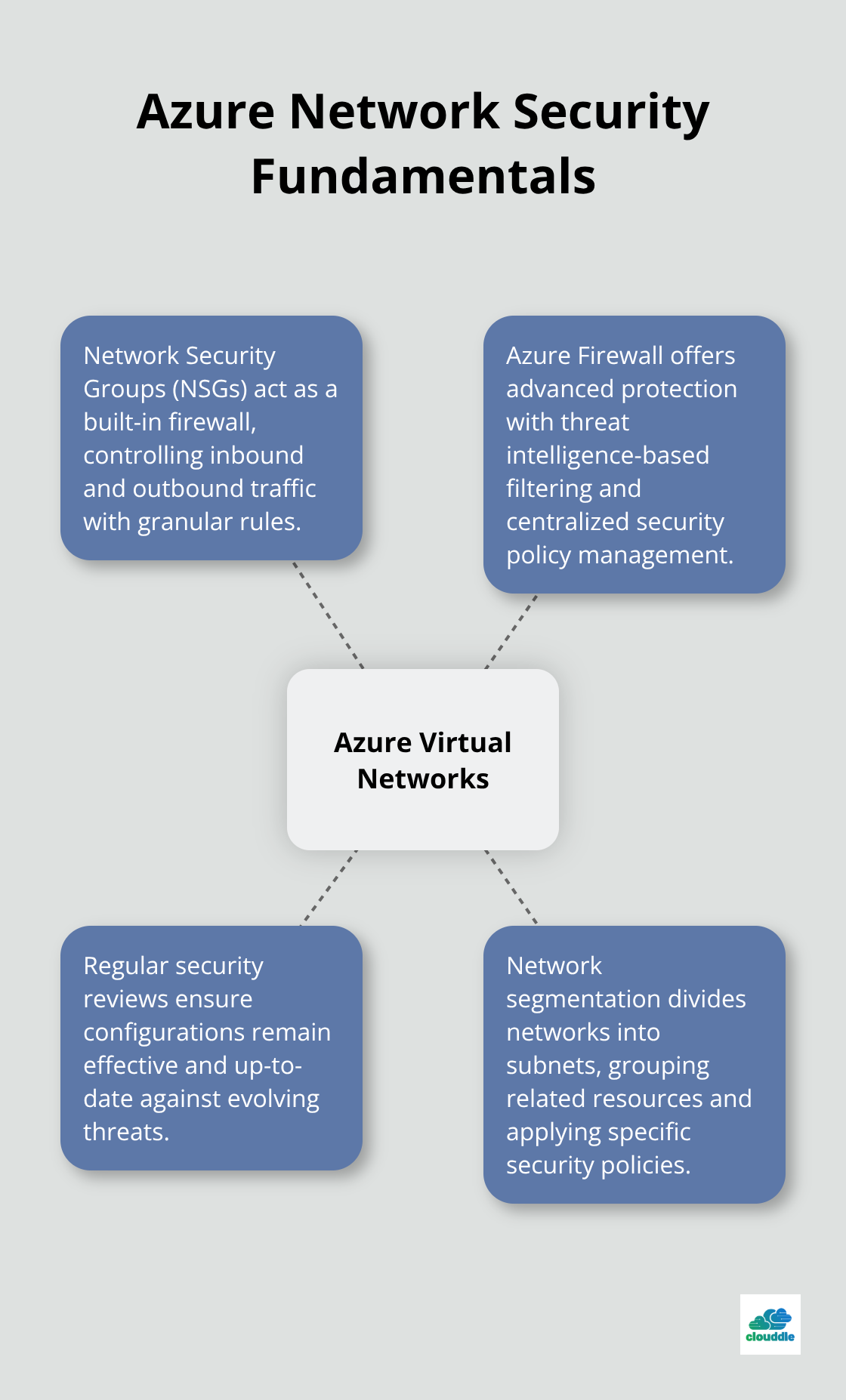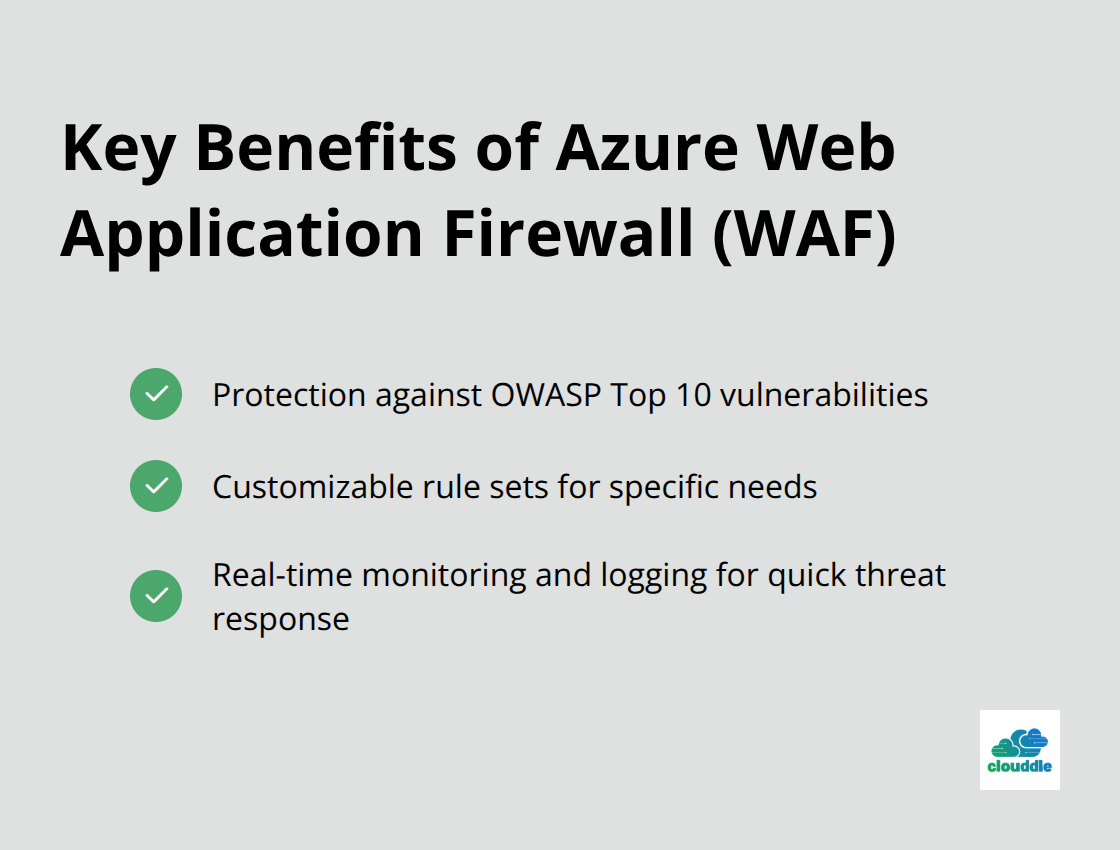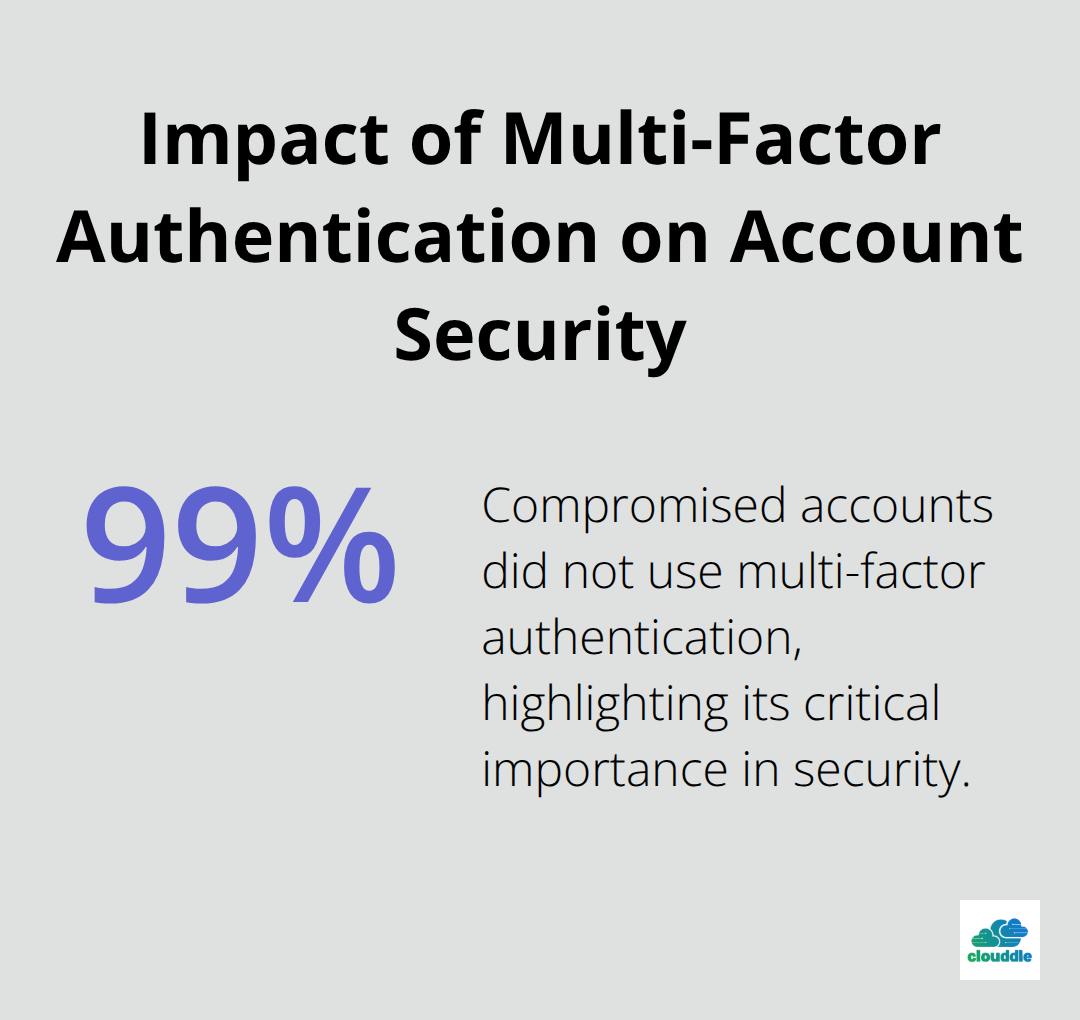Azure network security is a critical aspect of cloud infrastructure that demands constant attention and improvement. At Clouddle, we’ve seen firsthand how robust security measures can protect businesses from evolving cyber threats.
This blog post will guide you through essential strategies to enhance your Azure network security, from fundamental concepts to advanced techniques. We’ll explore key features, best practices, and emerging trends to help you build a comprehensive security strategy for your Azure environment.
What Are Azure Network Security Fundamentals?
The Foundation: Azure Virtual Networks
Azure Virtual Networks serve as the cornerstone of network security in Microsoft’s cloud platform. These networks create isolated environments for the deployment and management of Azure resources. Network segmentation, a key feature of Azure Virtual Networks, allows you to divide your network into subnets. This approach groups related resources and applies specific security policies to each segment, which limits the potential impact of a security breach by containing it within a single subnet.
Network Security Groups: Your First Line of Defense
Network Security Groups (NSGs) act as a built-in firewall for your virtual networks, controlling inbound and outbound traffic. NSGs allow you to create granular rules based on source and destination IP addresses, ports, and protocols.
To maximize the effectiveness of NSGs, follow the principle of least privilege. Start by denying all traffic, then gradually open up only the necessary ports and protocols. This approach significantly reduces your attack surface.

For instance, if you run a web application, you might only need to allow inbound traffic on ports 80 and 443 (for HTTP and HTTPS traffic, respectively). All other ports can remain blocked, minimizing potential entry points for attackers.
Azure Firewall: Advanced Protection for Your Network
While NSGs provide basic filtering, Azure Firewall offers more advanced protection. This managed, cloud-based network security service protects your Azure Virtual Network resources with features such as:
- Threat intelligence-based filtering (to block malicious IP addresses and domains)
- Outbound FQDN filtering (crucial for controlling which internet destinations your resources can communicate with)
- Centralized security policy management
The ability to centralize your security policy management stands out as one of Azure Firewall’s most powerful features. Instead of managing multiple NSGs across different subnets, you can create a single set of rules that apply to all your virtual networks. This centralized approach not only simplifies management but also reduces the risk of configuration errors.
Implementing Azure Firewall alongside NSGs provides a robust, multi-layered security approach. While it does come with additional costs, the enhanced protection and simplified management often outweigh the expense, especially for larger or more complex environments.
The Importance of Regular Security Reviews
Azure network security requires ongoing attention. Regular reviews and updates of your security configurations are essential to stay ahead of evolving threats. Try to schedule periodic audits (e.g., monthly or quarterly) to ensure your security measures remain effective and up-to-date.
As we move forward, we’ll explore more advanced Azure network security measures to further fortify your cloud infrastructure. These advanced techniques build upon the fundamentals we’ve discussed, creating a comprehensive security strategy for your Azure environment.
Advanced Azure Network Security Techniques
Azure DDoS Protection: Shield Your Network
Distributed Denial of Service (DDoS) attacks can paralyze online services. Azure DDoS Protection Standard offers a robust defense against these threats. It detects and mitigates attacks automatically, ensuring service availability during malicious traffic surges.
To implement DDoS Protection Standard:
- Enable it at the virtual network level
- Configure alert thresholds for notifications
- Use telemetry to analyze attack patterns
Microsoft reports that DDoS Protection Standard has extensive mitigation scale, with the ability to protect against all L3/L4 attack vectors and the largest known DDoS attacks.
Web Application Firewall: Secure Your Apps
Azure Web Application Firewall (WAF) provides centralized protection for web applications against common exploits and vulnerabilities. It adds an essential security layer for any internet-facing application.
Key benefits of WAF include:
- Protection against OWASP Top 10 vulnerabilities
- Customizable rule sets for specific needs
- Real-time monitoring and logging for quick threat response

To maximize WAF effectiveness, review and update your rule sets regularly based on emerging threats and your application’s specific requirements.
Azure Bastion: Enable Secure Remote Access
Traditional RDP and SSH connections can fall prey to attacks. Azure Bastion provides a more secure way to access virtual machines directly from the Azure portal, eliminating the need to expose public IP addresses.
To implement Azure Bastion:
- Deploy it in a dedicated subnet within your virtual network
- Configure NSG rules to allow traffic only from Azure Bastion
- Use Azure AD for authentication to enhance security further
Azure Bastion is a fully managed PaaS service that you provision to securely connect to virtual machines via private IP address.
Continuous Monitoring and Threat Detection
Implementing advanced security measures is only half the battle. Continuous monitoring and threat detection play a vital role in maintaining a robust security posture. Azure Security Center (now part of Microsoft Defender for Cloud) offers advanced threat protection across your hybrid cloud workloads.
Key features include:
- Unified infrastructure security management
- Advanced threat protection using machine learning and behavioral analytics
- Regulatory compliance assessments (useful for industries with strict security requirements)
Try to integrate Azure Security Center with your existing security information and event management (SIEM) solution for a comprehensive view of your security landscape.
As we move forward, we’ll explore best practices that will help you maintain and enhance your Azure network security over time. These practices will build upon the advanced techniques we’ve discussed, creating a holistic approach to securing your Azure environment.
How to Maintain Strong Azure Network Security
Conduct Regular Security Audits
Security audits form the foundation of a robust defense against emerging threats. We recommend comprehensive audits at least quarterly, with more frequent checks for critical systems. Azure Security Center’s built-in assessment tools help identify vulnerabilities and misconfigurations. A report by Cybersecurity Ventures shows that in 2024, organizations performing regular security audits experienced 63% fewer successful cyberattacks compared to those that didn’t.
Implement Least Privilege Access
Minimizing your attack surface requires the principle of least privilege. Start by auditing your current access permissions across all Azure resources. Remove unnecessary privileges and use Azure Role-Based Access Control (RBAC) to assign only the minimum required permissions for each user or service. Microsoft reported 1,360 vulnerabilities in 2024, up 11% from the previous record, covering Windows, Office, Edge, Azure, and related products, underscoring the importance of this practice.
Encrypt Data in Transit and at Rest
Data encryption is essential in today’s threat landscape. Use Azure Storage Service Encryption for data at rest and enable HTTPS for all public-facing applications. For sensitive data, Azure Key Vault manages and rotates encryption keys securely. A study by the Ponemon Institute found that the average cost of a data breach was $3.86 million in 2020, but organizations with fully deployed encryption reduced this cost by an average of $360,000.
Keep Azure Security Patches Up to Date
Outdated software often serves as an entry point for attackers. Enable automatic updates for your Azure VMs and use Azure Update Management to schedule and track patch installations across your environment. For containerized applications, Azure Container Registry automatically scans for vulnerabilities in your container images. Microsoft’s Security Intelligence Report states that 99.9% of compromised accounts did not use multi-factor authentication, highlighting the need to keep security measures current.

Implement Network Segmentation
Divide your Azure virtual network into smaller subnets based on function or security requirements. This approach limits the potential spread of a breach and allows for more granular control over network traffic. Use network security groups (NSGs) to control traffic between subnets. A Verizon Data Breach Investigations Report found that 43% of breaches involved web applications, emphasizing the importance of proper network segmentation.
Final Thoughts
Azure network security combines foundational elements with advanced features to protect cloud infrastructure. Organizations must implement a comprehensive strategy that includes regular audits, least privilege access, and data encryption to reduce vulnerability to cyber threats. The future of cloud security will likely involve AI-driven threat detection and enhanced integration between security tools.
We expect increased focus on securing multi-cloud and hybrid environments as cloud technologies evolve. Staying informed about the latest Azure security features and industry best practices is essential for maintaining a strong security posture. The landscape of Azure network security changes rapidly, requiring constant vigilance and adaptation.
At Clouddle, we help businesses navigate this complex landscape with our managed IT and security services. Our expertise in Azure network security allows us to provide robust, tailored solutions that keep your cloud infrastructure protected. This approach enables you to focus on your core business objectives while we handle the intricacies of cloud security.


